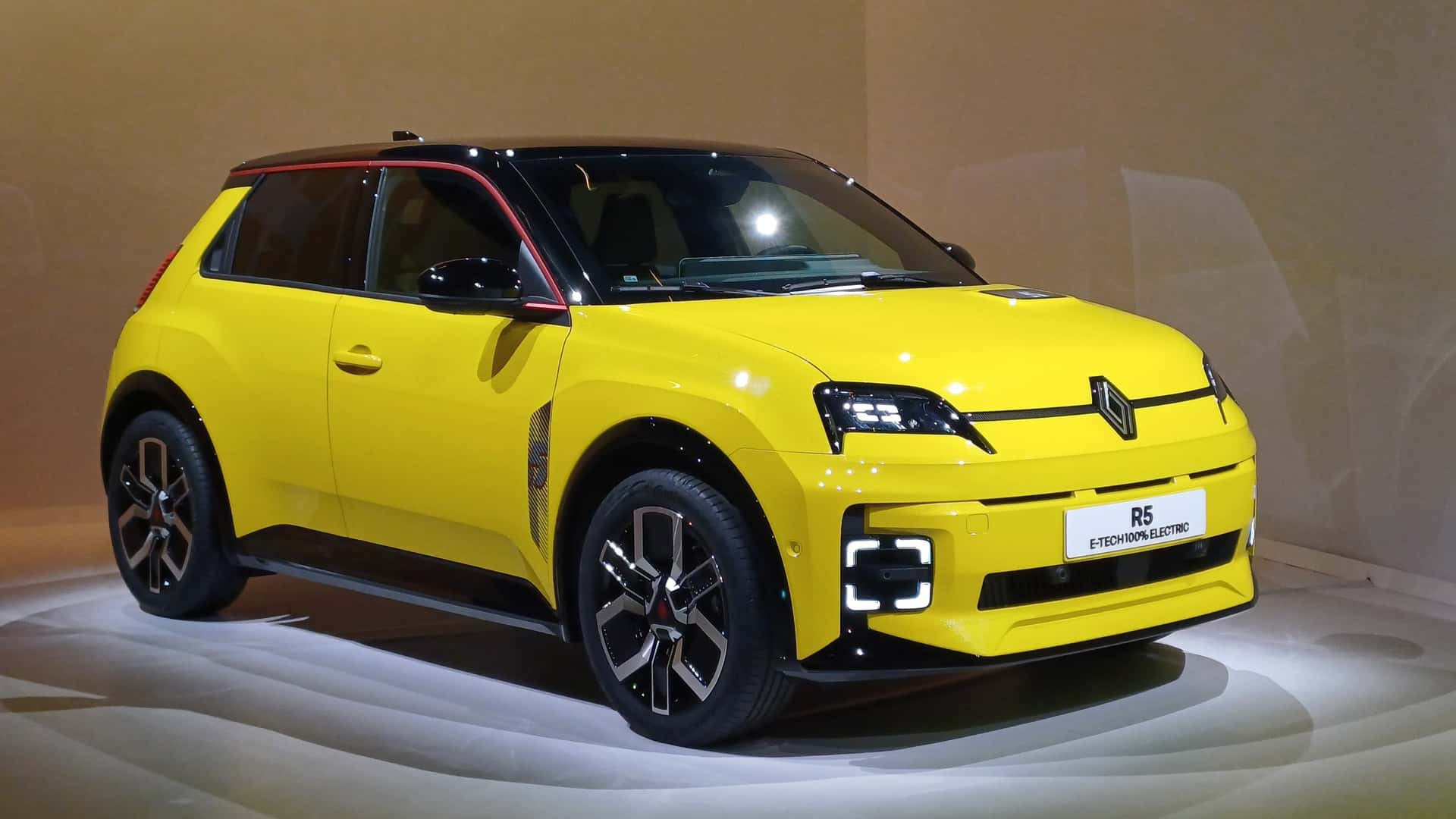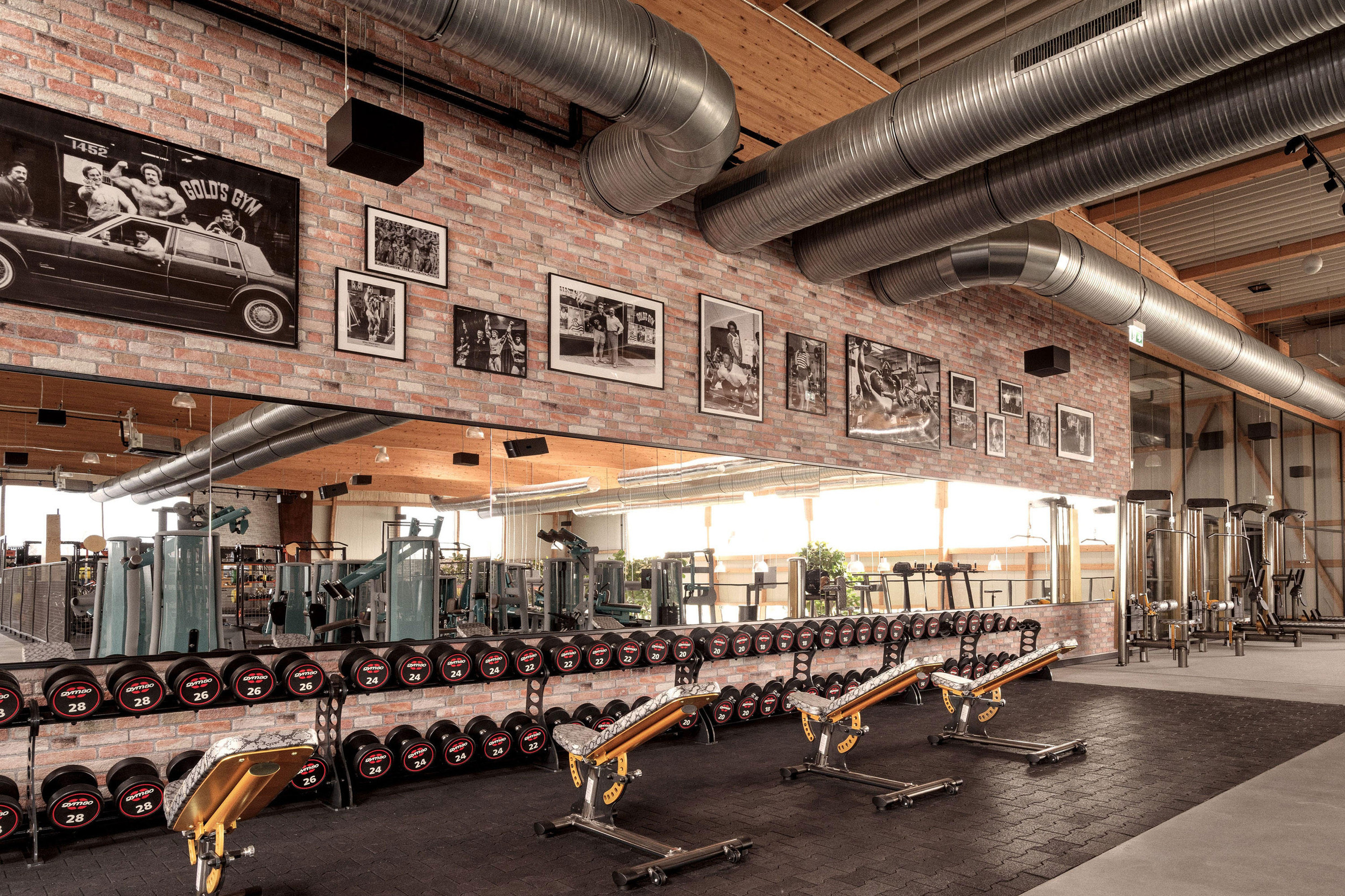The cold rational left-brain summary is simple. The Renault 5 is an electric supermini, sitting at an impressively good-value part of the price-range curve. A version with 255 miles of WLTP range can be had for £25,000 and it's got most mod cons.
But of course the right brain is in charge here. Just look at it. This is a car you desire rather than merely decide upon. Renault has tapped into a seam of happy memory. The original R5 was a brilliant piece of distinctive product design that gave millions of people sunny memories in the simpler times and roads of the 1970s to 1990s. That covers two generations of drivers, and there's another generation younger than that who were rattling round, unbelted, in the back.
Of course the 5's pitch isn't wholly novel. You can have a Mini Cooper Electric and an electric Fiat 500. Like them, the R5 is more than a slavish visual copy of a sepia-toned memory.
The decision to re-make one of Renault's 24-carat greatest hits has galvanised everyone in the company to pour their uttermost efforts into it. There are plenty of tales of designers and engineers working most of the way round the clock to perfect it. And when a car has been made by people who love it, it shows.
Right from the front, yes. The four-cornered motif in the headlights winks as you approach. The foglights have the same graphic, and so do the dashboard vents. The rear lights refer to the Mk2 Supercinq R5, the one-piece seat-backs to the Gordini version and the wheel-arches to the mad-arse mid-engined 5 Turbo rally car. The very first R5 had a bonnet vent. Here it's not a vent but a state-of-charge indicator.
Point is, even if you don't remember the old R5 or don't care, the new one stands as an attractive design.
The retro goes on. The dash has stitching to emulate the original car's ridged plastic moulding and the headlining distantly resembles a rattan basket. The binnacle is a similar rectangular shape to the original's. But of course this time around it houses flatscreens.
Materials are mostly pretty lavish, and bright colours add to the cheery air. The driver interface is at heart the one we've praised in other Renaults. Lots of well-placed real switches make it quick and easy to operate with your eyes on the road.
The driver sits low, with no sense of being perched on a battery. It's compact even for a supermini so rear legroom is tight, but not inhumane. For more, click on the Interior tab.
The platform is EV-native, not just an adapted Clio. That means a flat floor, long wheelbase and decent room for a car well under four metres long. It also saves money as the body can be simpler than if it had to hold an engine too. It doesn't need a strong floor because the battery case strengthens it. There's no need to put in panel shapes and mounting points for the absent fuel tank, gearbox or exhaust. That cuts cost and saves weight. It's 1,450kg even with the bigger-battery option.
Underneath there's a multi-link rear suspension and all-disc brakes. All versions have a heat pump.
They have bi-directional charging so you can charge when electricity is cheap in the small hours and sell some back at higher peak-time rates, cutting its cost of living.
It's a 52kWh pack using NMC cells at 400V. The motor is an electrically excited synchronous machine (i.e. no rare-earth elements in magnets in the rotor, but all coils for rotor and stator). In the test car it's 150bhp. Charge time for 15-80 per cent is half an hour. The other time you'll want is the 0-62mph, which is 8.0 seconds.
Soon after launch they'll add a 40kWh version with a motor rated at 120bhp. Range there is 195 miles; same as the larger-battery Fiat 500.
We’re glad to say the engineers put in just as much love as the designers. It feels light on its feet and nimble. The steering's progressive, and when you load the tyres it resists understeer quite playfully.
Yet it's mature too. The ride is taut but well damped at town speed, but on a difficult B-road it lets the car breathe nicely. It's quiet too. More details in the Driving section.
The R5’s not the first premium-retro EV. It shares with the Mini and Fiat 500 a knowing silhouette, lavish external jewellery and a smart, cheery cabin. But it’s bigger than a Fiat 500 and goes further, and it's more practical than the Mini and copes better with bumpy roads.
It's not the cheapest EV either. But looking at performance and range, it's right in the sweet spot, and the bi-directional charging could help subsidise you outlay.
Most of all it feels consistent: as charming to drive as it is to look at and to sit in. Your first love should last.
It’s been almost four years since Renault boss Luca de Meo outlined his 'Renaulution' plan to lift the brand's desirability (and profitability) with a range of new models reimagining some of its much-loved icons from the past.
At the heart of it all was a stunning remake of the Renault 5. The brand hopes this returning supermini can do what the original R5 did by bringing affordable mobility to France, but this time using electric power. A starting price of around £23,000 is expected. In business and style terms, the idea is that the new R5 does for Renault what the 500 did for Fiat and Mini did for BMW.
The concept version of the 5 looked incredible, and thankfully the production car has fully retained that ‘want’ factor in visual terms despite an expedited development. When something looks that good, you really want it to drive well – and now is a good time to say the reborn 5 truly has been worth the wait.
This is a design that doesn’t need much explaining, it being a fairly straightforward modernisation of the original 5, albeit a hugely successful one. Looks fantastic, doesn’t it?
The 5 is a bit narrower and shorter than a Renault Clio and marginally taller due to that battery being in the floor, but it doesn't look like a mini crossover like many electric cars do, and neatly hugs the ground instead.
It essentially replaces the Renault Zoe in the Renault line-up, but it's a very different proposition than that rather steady offering. In the more vibrant colour options, the 5 screams Mini in its sense of fun and character, while making several unashamed nods to the original R5 and R5 Turbo not only in its shape but in the detail.
Yet for something that looks so remarkable, the 5 is actually rather unremarkable under the skin. It mixes various parts of other small Renault Group models to create what is nominally a bespoke electric car architecture called Ampr Small.
The front strut suspension is from a Renault Captur, the rear a multi-link from a Dacia Duster 4x4. Such rear suspension is uncommon for small cars, yet the need to package the battery in the floor necessitated it. It brings obvious ride and handling benefits along, too.
The overall feeling inside is a positive one, with lots of light and colour and well-integrated technology. It's not only the exterior design that has character.
There is an excellent driving position with a comfortable seat that has ample support. You sit low and deep, in the car rather than on it, but a relaxing front cabin comes at the expense of rear leg room, which is almost non-existent for those in the back if the front passengers are even an average height. Still, the fact the 5 has five doors is a boon.
The boot is a good size, though, its 277-litre capacity up on the 210-litre Mini – the trade-off for a smaller rear cabin, much like in the Clio. A high load lip is another thing the 5 has in common with a Clio, which makes access to the boot tricky.
The interior colour and style is a world away from the more traditional Clio and there are plenty of nods to the original R5 in its design and trim. The blue denim trim on the dashboard really lifts the mood in particular (this padded trim is another nod to the original R5, and there is a yellow option, too) and for once ensures that a large touchscreen isn't the dominant feature of an interior.
There is one of those still, of course, 10in in diameter and running the slick Google system, while there is a crisp display of the same size for the driver.
The touchscreen is slick and quick to respond to inputs. It is one of the better systems on the market, and doesn’t get bogged down in overcomplicating menus. Wireless Apple CarPlay and Android Auto both feature.
The screen is backed up by a substantial amount of physical switchgear for features like the heating and all major safety controls. It’s a good balance that works well. Elsewhere, you can spot Clio switchgear with some of the stalks and the window controls, but that’s no bad thing and Renault has chosen to spend the money on things that matter and make a difference. Likewise the bottom half of the interior is all hard black plastic, but you can live with it for what need to be harder-wearing surfaces. The colour and intrigue come from above.
Drivetrain options are a 118bhp front-mounted motor with a 40kWh battery and 190 miles of range or a 148bhp motor with a 52kWh battery and a 250-mile range, the former getting to that eye-catching headline price (a Mini Cooper E starts from £30,000 and has less range).
When you look at the new 5, you are expecting a full hot hatch driving experience, but the reality is quite different. That's no bad thing, as rather than being firm and raucous it surprises you in how pleasant and rewarding it is to drive at normal speeds and in a normal way.
Performance-wise, it is a toss-up between just enough and just right: the 5 doesn't have the immediate shove of many small electric cars, and it never feels like the front tyres are going to start peeling up the asphalt beneath them. Still, it would be wrong to call it a slouch - 0-62mph is still 8.0sec - yet beyond about 50mph responses are noticeably dulled.
There is certainly room for the Alpine version that is coming (the new Alpine A290), both in performance terms and in the potential to stiffen up the chassis and push the car in a different direction.
The brakes are excellent, with feel as good as any electric car I've tested. This is thanks to a new 'One Box' decoupled system that gets the friction brakes and regeneration from the motor working together more seamlessly and ensuring a constant feel and response no matter the battery capacity or level of regen.
The supple ride quality is a real high point in particular: it’s smooth around town over speed bumps and potholes, yet it remains settled at higher speeds on the open road.
It's much like the Clio - Autocar's Best Small Car of 2024 - in that regard as a very comfortable car, which is no surprise given the underpinnings and Renault's recent track record here.
The 5 is agile and darts around town, with quick, progressive steering. A Mini is still more fun when you're pushing on, and the 5 will eventually understeer and feel more numb as the speeds rise.
But with the trade-off being such civilised yet in no way uninspiring road manners, that seems like a fair compromise to us.
We were seeing just over 200 miles of indicated range on our test route on a mild Danish day, a drop on the official figure of 250 miles of electric range. It's not as if Renault has skimped on battery capacity given the size of the car, so this is one aspect to look closely at in longer tests in the UK.
The Mini comparison is an obvious one, not just for its characterful styling and positioning but in the way it will be marketed and offered with customisation options.
There are three trim levels (Evolution, Techno and Iconic), five exterior colours, two different wheel designs and two different interior colours, with the latter two determined by which trim level you opt for. The denim one looks great and that comes with the Techno version.
Techno looks to be a sweet spot in the range with the bigger battery, costing around £27,0 and getting the Google infotainment system and the larger dual screens for the interior. The 5 will cost around £23,000 in base form and even the top-spec Iconic model with the larger battery will cost less than the cheapest Mini Cooper E, which starts from £30,000. Climbing up the trim ladder costs £2000, and the bigger range battery is £2000 extra than the standard-range pack.
Expect lots of special editions over the 5's life cycle, starting with a Roland Garros model that’s a tie-up with the French Open tennis tournament - including carpets the colour of a clay court.
An Alpine version is also coming, equipped with 215bhp, a wider track, bespoke suspension, brakes and tyres.
The Renault 5 is a successful reinvention of a small car icon for the electric era. I really like it and its approach: a car that values comfort and good road manners but is still desirable, and without the need to be overbearingly sporty.
The way the R5 rides is a particular highlight, making it a comfortable car to drive every day. Performance levels are adequate, although in early tests the real-world range is slightly further off the official figure than we would expect.
The interior is as good to look at as the exterior, and it is a joy to sit in, too. The seats are fantastic and the technology is not overbearing; so many interiors have become minimalist and dominated by a drab screen but the Renault 5 screams fun and colour.
For the first time since its own successful relaunch a quarter of a century ago, the Mini at last has a credible rival to contend with: a car that can not only potentially out-drive it but also compete in the desirability stakes. Viva la Renaulution.

















